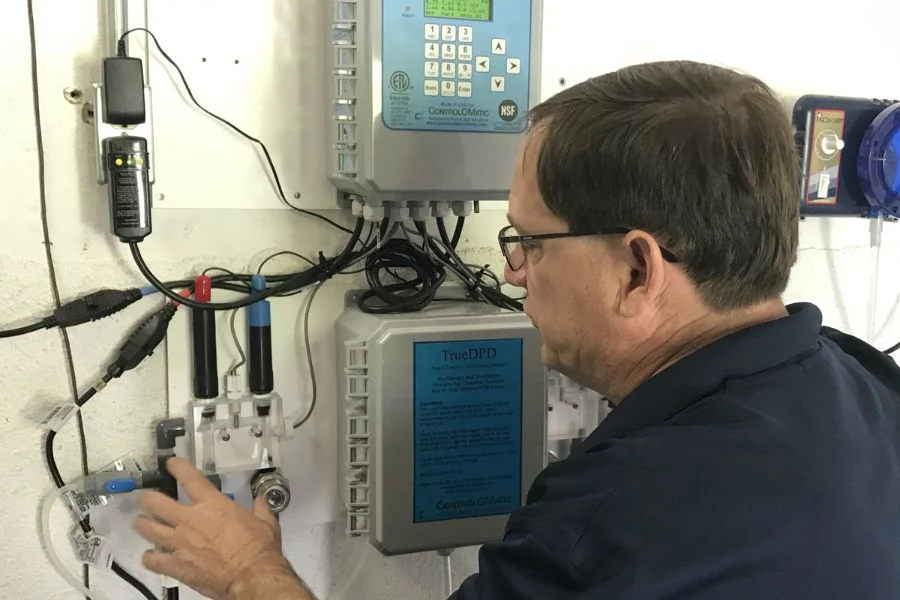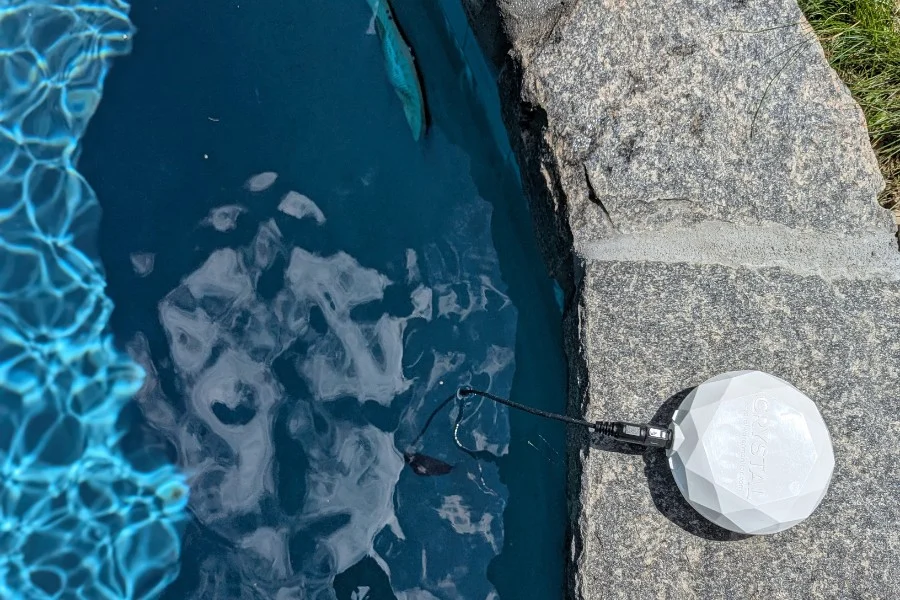If you’ve ever stayed at a hotel or swam in a public pool, chances are that pool was being monitored using ORP, or Oxidation-Reduction Potential.
ORP sensors are the standard in commercial pool testing because they give a continuous, real-time, read on how effectively the water is being sanitized.

Some residential pool tests, including smart monitoring devices, utilize ORP for their testing. So what is it and how does it differ from more “traditional” chlorine testing?
But what exactly is ORP? And how does it differ from testing kits?
What is ORP?
As stated above, ORP stands for Oxidation-Reduction Potential. It measures the ability of your sanitizer (primarily chlorine) to oxidize, or disinfect, organic contaminants in water.
Think of it as a disinfection power meter. A higher ORP means water has more oxidizing power, and is more capable of keeping things clean and sanitized.
Oxidation is a chemical reaction where electrons are transferred, usually from a contaminant to a sanitizer. Chlorine is essentially stealing electrons from harmful stuff, breaking it down, and neutralizing it.
This is how chlorine keeps the water safe.
What Does ORP Mean for Pools?
To speak in pool terms, ORP the effectiveness that your sanitizer can kill the contaminants like bacteria, algae, and viruses.
It is not a measurement of how much chlorine is in the water like an FC reading, but rather the potential it has to oxidize (hence the name!)
How is ORP Measured in a Pool?
ORP is measured using a special electronic sensor or probe that goes into your water. The probe detects the voltage generated by oxidation reactions and converts that into a millivolt (mV) reading.

Unlike test strips or liquid drop kits, ORP is continuous and automatic. That’s what makes it so valuable for real-time monitoring systems on commercial pools.
While the testing ranges can vary depending on the probe, a good ORP level for your pool water is +650 to +750 mV.
Key Parameters and Factors that Affect ORP
Beyond the amount of sanitizer, ORP is influenced by many factors. Some of the more important chemistry factors include:
- pH: In ORP readings, a high pH makes chlorine less effective. As pH rises, ORP drops even if chlorine levels stay the same. ORP readings prefer a pH on the lower end, around 7.3-7.6.
- Cyanuric Acid (CYA): CYA buffers chlorine, protecting it from sunlight. A higher CYA can cause a lower ORP reading because it requires more chlorine to sanitize. This is why good ORP levels have CYA at 30 – 50 ppm.
- Water Temperature: Warmer water increases reaction rates and can slightly raise ORP. Cold water slows reactions and can cause lower readings.
- Contaminants: If there’s a lot of stuff in the water for chlorine to react with (like organic matter or ammonia), ORP may drop as sanitizer is “used up” faster.
A Different Philosophy Than Traditional Testing
If you’re used to managing your pool with drop-based test kits or strips, you’ve probably learned that there’s some flexibility in ranges. For example, pH might be fine anywhere from 7.2 to 7.8, and CYA levels for outdoor pools can go as high as 70–80 ppm, especially with saltwater systems.
But ORP flips that mindset. Because it is measuring how efficiently your sanitizer is working in real time, it becomes clear that small changes in pH or CYA can have a big impact on sanitation effectiveness.
It’s not just about being “in range”, it’s about staying in a tighter window where chlorine can act quickly and effectively. That’s why ORP-based systems tend to favor stricter control over pH (often 7.4–7.6) and lower CYA level (usually 30–50 ppm).
How to Increase ORP
There are a couple things that you can do to increase your ORP levels:
- Raise free chlorine (FC) levels. It’s pretty simple, more chlorine means more potential to oxidize contaminants.
- Slightly lower pH levels (aim for 7.3–7.6). ORP levels are very sensitive to pH change, especially on the higher end.
- Keep CYA at a lower recommended range (30–50 ppm). Remember, ORP measure chlorine potential and activity. Higher levels of CYA will require higher levels of chlorine to work effectively.
- Brush and clean regularly to reduce contaminant load. Keeping the pool healthy and moving reduces the potential of chlorine needed to oxidize. The less demand for chlorine, the more potential it has.
ORP is Just Another Way to Test and Sanitize
ORP is another valuable tool for understanding how well your sanitizer is working, especially when used alongside traditional testing.
I don’t think there ever is a replacement for measuring FC, CYA, or pH as standalone items, but it can add a layer of insight that helps fine-tune your water chemistry.
Remember, ORP is just a guide, and understanding the context behind the numbers is key!
